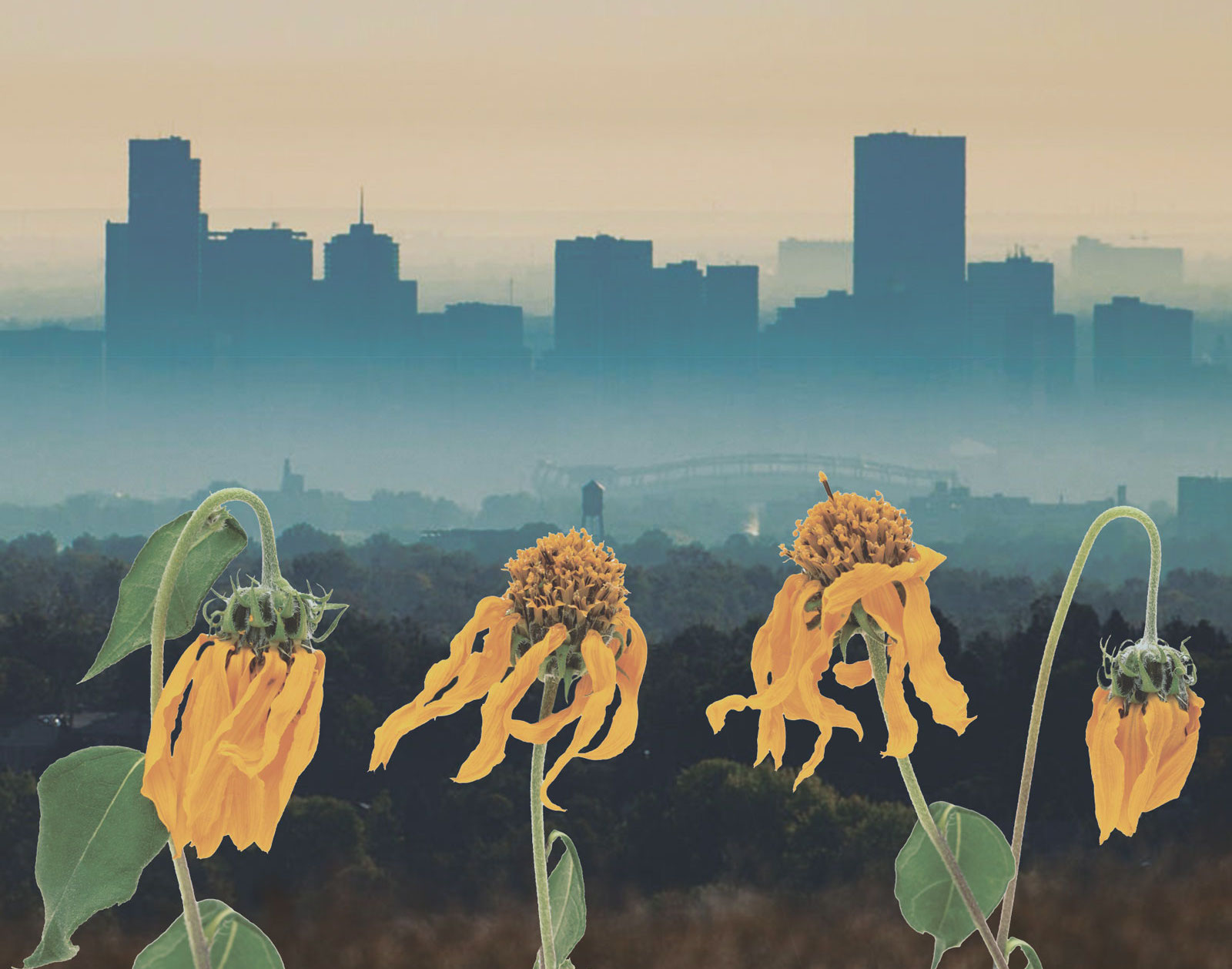The Local newsletter is your free, daily guide to life in Colorado. For locals, by locals.
In the spring, a small garden at the entrance of Boulder’s National Center for Atmospheric Research (NCAR) bursts with healthy plants. Cut-leaf coneflowers dazzle with bright yellow petals. Reeds poke out between leafy blankets. Bright green tendrils spill over the plot, trailing from potatoes, common milkweed, and snap beans. As late summer sets in, however, the plants grow sickly, turning pale or yellow or developing brown spots. They’ve become victims of an unseen foe: ozone.
You might be asking yourself, Doesn’t the ozone layer protect us from the sun’s ultraviolet rays? It does—but the colorless gas also forms near the Earth’s surface when exhaust mixes with sunlight, a process that often peaks during the sweltering days of August and September. When ozone levels spike close to the ground, they aren’t just a problem for potatoes. In large amounts, the pollutant can cause breathing issues and lead to long-term lung damage. That’s worrisome because the Environmental Protection Agency’s ozone safety threshold is 70 parts per billion—and Front Range levels typically measure between 60 and 78 in the summer.
Denver’s location near the mountains, whose valleys trap warm air and toxins, means we’re already at a disadvantage when it comes to air pollution. The area’s exploding population, as well as ramped-up gas and oil drilling, have only exacerbated the problem. In fact, the American Lung Association issued Denver County a D grade for ozone pollution in 2017. It’s gotten so bad that the EPA could mandate stricter regulations for the region once the agency completes its next ozone evaluation in the spring.
Unlike the days of the Brown Cloud in the ’80s and ’90s, when a thick haze of smog coated the Mile High City, you can’t see this pollution. Not without NCAR’s help, anyway. The research center’s garden—in addition to similar plots at the University of Colorado Boulder and in Rocky Mountain National Park—is filled with ozone-sensitive flora that acts as a helpful visual aid. “When you see this damage, it makes you think on a deeper level about what you’re breathing,” says NCAR project scientist Danica Lombardozzi.
“Exercise indoors until midnight” —One of the many helpful tips posted by CDOT on high-ozone days
But ozone gardens will be used as more than just red flags. For instance, the CU Boulder plot typically shows less damage than the NCAR one—which is why researchers plan to track the differences in ozone damage at sites across the country. If they’re able to pinpoint key factors that make a plant or location less susceptible to ozone (elevation? proximity to a road?), scientists can then design solutions, such as genetically engineered ozone-resistant plants. Fixes like that could help with a nationwide five to 10 percent drop in yields of soybeans and corn—the Centennial State’s second-largest crop—due to rising ozone levels.
Lombardozzi hopes to release an app so everyday gardeners can submit photos of their own ozone-afflicted plants to aid NCAR’s research. She envisions this national network of gardens acting as a “canary in the coal mine” for bad air. But if you’d rather not wait for NCAR to find out if Colorado’s air is damaging your lungs, buy ozone-sensitive cut-leaf coneflowers from local nurseries. You can admire their brilliant petals—at least until ozone’s black thumb notifies you to go back indoors.









